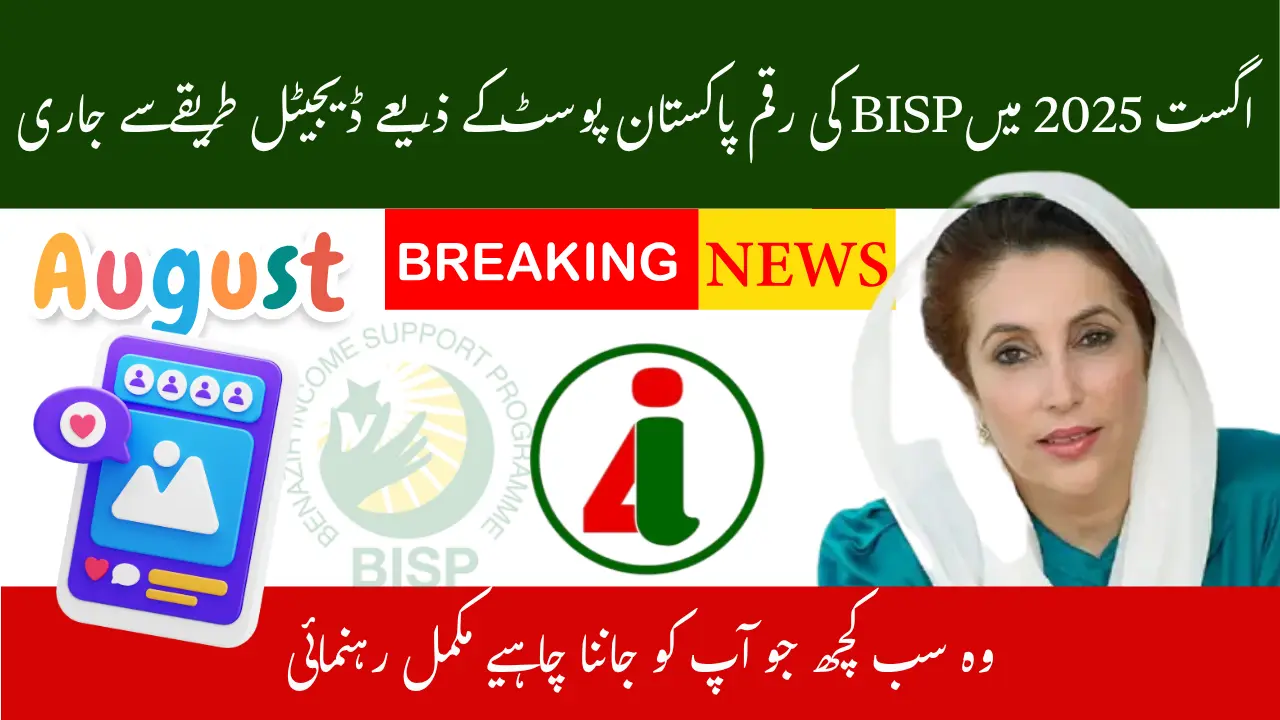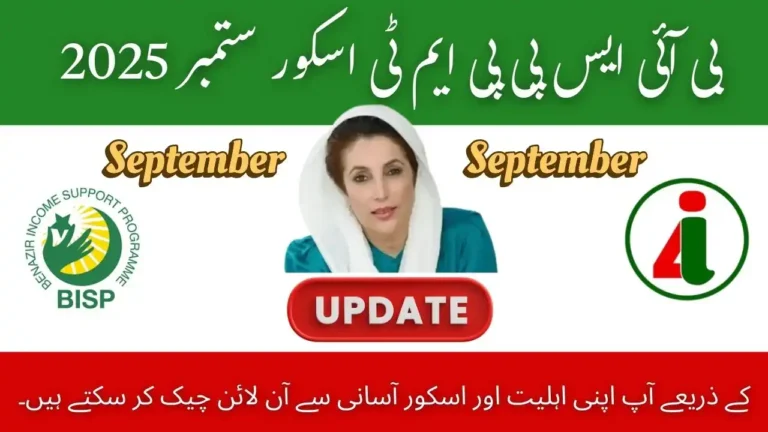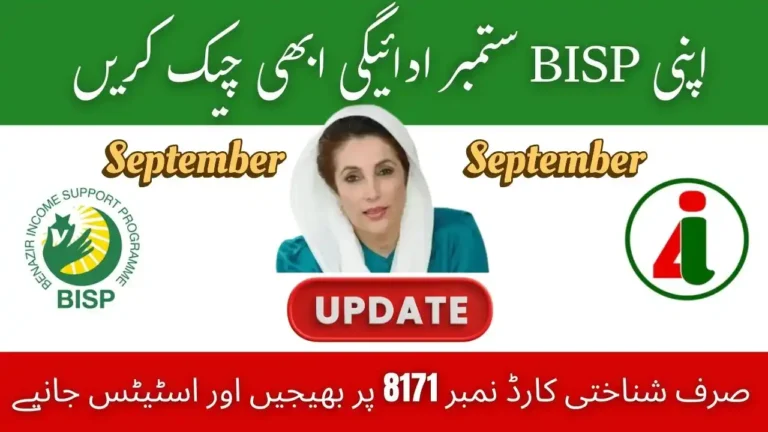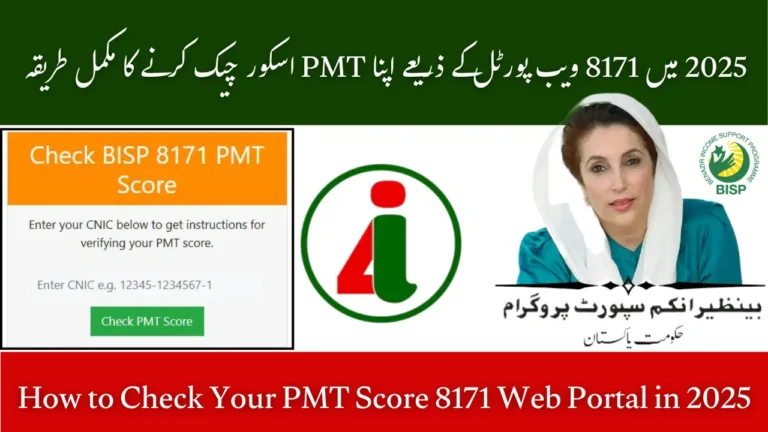In a major step toward financial inclusion, the Benazir Income Support Programme (BISP) has officially extended its partnership with Pakistan Post to streamline digital payments under its flagship welfare programs. This collaboration, which is scaling rapidly in August 2025, is transforming how millions of low-income families receive government assistance.
Instead of standing in long queues or facing third-party agents deductions, beneficiaries can now receive their payments directly through digitally enabled post offices across the country. With biometric authentication, SMS alerts, and location-tracking features, the program promises transparency, accountability, and accessibility like never before.
Let’s dive into what this digital collaboration truly means for the common citizen, the technological foundation behind it, and how it’s reshaping public welfare delivery in Pakistan.
What Is the BISP Pakistan Post Digital Payments August 2025 Initiative?
This initiative is a joint effort by BISP and Pakistan Post to distribute monthly stipends and one-time payments through digitized and biometric-enabled postal branches nationwide.
Key highlights:
-
Launched officially in early 2024 and now rapidly expanding in August 2025.
-
Aims to eliminate fraud, delays, and intermediary corruption.
-
Over 6,000 post offices have been upgraded to facilitate BISP beneficiaries.
-
The model operates on real-time biometric verification and SMS-based payment alerts.
Why Is August 2025 a Critical Month?
In August 2025, this partnership reached new milestones:
-
Over 1.7 million families have received their payments via Pakistan Post in just this month alone.
-
50 new Tehsils were added to the digital payment network in Punjab, Sindh, and Balochistan.
-
Average disbursement time has dropped to just 4 minutes per transaction.
-
Women-led households in remote areas reported the highest satisfaction levels.
-
24/7 helpline support and live complaint tracking were launched this month.
How Does the Digital Disbursement Process Work?
Here’s a step-by-step look at how payments are processed under this system:
-
SMS Notification: Eligible beneficiaries receive a payment alert from 8171.
-
Nearest Post Office Visit: They visit their assigned biometric-enabled Pakistan Post branch.
-
Verification: Biometric authentication via thumb scan.
-
Payment Issued: Cash is paid out instantly; receipt is generated.
-
Grievance Registration: Any issue (e.g., short payment, delay) can be recorded at the spot or via mobile.
This process is being praised for its simplicity, transparency, and low waiting time.
Technology Behind the System
The integration is powered by:
-
Real-time NADRA database sync for biometric verification.
-
SMS gateway system integrated with BISP’s dynamic database.
-
QR-code-enabled tracking on all disbursement receipts.
-
Post Office staff trained using e-Governance dashboards for each payment cycle.
August 2025 saw the roll-out of the upgraded version of this system — allowing real-time syncing even in low-bandwidth rural areas.
Impact on Female Beneficiaries
A core goal of BISP has always been to empower women financially. This partnership with Pakistan Post is tailored for:
-
Women without smartphones or formal bank accounts
-
Widows and single mothers with limited mobility
-
Beneficiaries in rural or underbanked districts
Data from August 2025 reveals:
-
92% of all recipients this month were female.
-
83% of women surveyed reported they now feel safe and confident managing their money.
-
Women from areas like Dera Ghazi Khan, Tharparkar, and Khuzdar accessed cash easily via mobile post offices.
Security and Fraud Prevention Measures
The system comes with:
-
One-person-one-payment verification
-
End-to-end biometric logs
-
Geo-tagging of all cash handouts
-
Integrated complaint system with tracking number
This month, less than 0.3% of all transactions faced disputes, and 98% of them were resolved within 72 hours, as per BISP’s internal compliance report.
Post Office Upgrades in August 2025
To handle growing demand, Pakistan Post implemented the following in August:
-
Added portable biometric devices to 1,200 mobile vans.
-
Trained 2,500 new field agents in customer handling and system use.
-
Installed solar backup systems in 400 rural offices for uninterrupted operation.
Regional Breakdown – Where It’s Working Best
Here’s a region-wise success snapshot from August:
| Region | Families Served (Aug 2025) | Avg Wait Time | Complaints |
|---|---|---|---|
| Punjab | 690,000 | 3.5 min | 0.7% |
| Sindh | 420,000 | 5.2 min | 1.2% |
| Khyber Pakhtunkhwa | 310,000 | 4.8 min | 0.6% |
| Balochistan | 210,000 | 4.3 min | 0.4% |
| AJK & GB | 100,000 | 6.1 min | 0.5% |
FAQs About Pakistan Post Starts BISP Cash Disbursement – August 2025 Digital Payment News
Q1: Can I still get BISP payments if I don’t have a bank account?
Yes. You don’t need a bank account. Simply visit your nearest Pakistan Post branch with your CNIC for biometric verification.
Q2: What if my thumbprint doesn’t work at the post office?
If biometric verification fails, you’ll be referred to a designated NADRA desk for manual verification and reprocessing within 5 days.
Q3: How do I know which post office I’ve been assigned?
Once your payment is approved, you’ll get an SMS from 8171 that also mentions the name or code of your designated post office.
Q4: Is there any fee or deduction by the post office?
No. The full amount is paid directly to you. If someone asks for a cut, immediately report it to the helpline or postmaster.
Q5: Can I authorize someone else to collect the payment on my behalf?
No. The system is biometric-based and only allows in-person verified collection by the beneficiary.
Q6: What should I do if I didn’t get an SMS but I’m eligible?
Call the BISP helpline (0800-26477) or visit your nearest tehsil BISP center to confirm your payment status and update your contact info.
August 2025 BISP Cash Payments Now via Pakistan Post Conclusion
The BISP–Pakistan Post collaboration marks a breakthrough in transparent and accessible public welfare distribution. In August 2025, the system not only scaled up across Pakistan but also proved its reliability with minimal fraud, faster access, and high beneficiary satisfaction. As it continues to expand, this model could become the gold standard for social protection payments in Pakistan and beyond.
With the use of simple infrastructure, real-time verification, and people-first design, this initiative is a big win for technology, governance, and the people it aims to serve.






